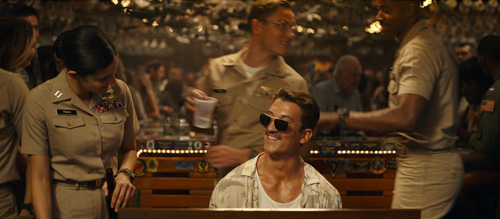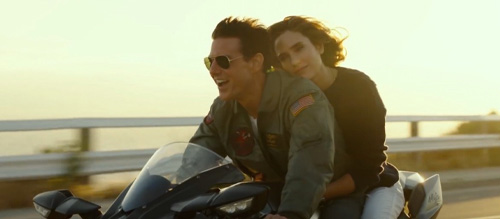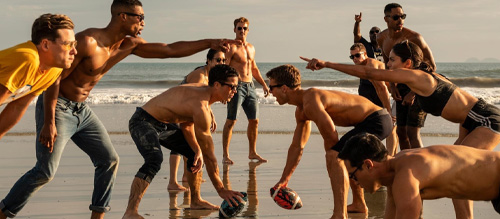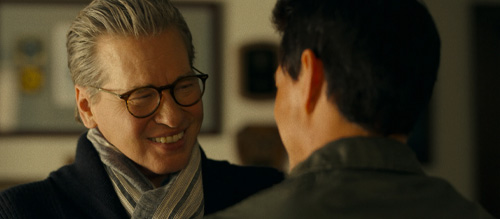Top Gun: Maverick Is in Love With Companionship, Familiarity

Humans are, undeniably and inevitably, creatures of habit. The coffee choice, the exercise routine, the order we put toppings on a sandwich – there’s a pattern and a preference to everything, even if it’s not conscious. That is why, when watching Top Gun: Maverick for the first or tenth time, no one cares that the themes have been addressed countless times before. Tom Cruise knows that and loves it. More than anything else, of course, he loves running (4 times in this outing), but Top Gun: Maverick is more than a platform for him to sprint on camera; it’s a romance flick dedicated to all the things we love, and love, and love again.
Firstly and at its broadest level, the film is gloriously formulaic. It is a sequel that feels more like an echo, it has a wonderfully cyclical opening and closing scene in a bloody hangar with spanner in hand, and then, to really prove its point, Cruise quite literally rides off into the sunset at the end. Structurally, it is one-dimensional, extremely linear and populated with digressions that are, more than anything else, tributes to something or other. Why all of this recipe-following? To keep you focused on the tone, on how much the characters love each other, and to remind you how much you love movies. Each scene in this definitive blockbuster is a flashbulb memory, an emotion on reel – this script could be sliced up into individual scenes and produced as shorts to promote emotional awareness in children, though the subsequent applications to the RAF would probably be unmanageable.
The choices made by the writers of this film are transparent, but inspired. Firstly, the lack of a specific enemy or even country as the target – in fact, an active avoidance of revealing one – is not an exercise in political caution by the movie studio, it’s a nod to the notion that this aspect is completely unimportant. This is not a combat film. It may be the setting, the context, but it is not the characterisation, the underlying message. This is a story about relationships.

The scene choices only support this. There is a sailing sequence, for apparently no other reason aside from showing Maverick’s love for Jennifer Connelly’s Penny Benjamin. The number of enemy-related hurdles in the film’s climax is ridiculous, just because people love to see what Miles Teller’s Rooster and Cruise’s Maverick will do for each other. The bouts of nostalgia and flybys of self-reference are so frequent, so broadcasted, that it begs the question: What cheese is good cheese? The answer, positively, is a big airplane-wing-shaped slab of whatever type this is.
Behind-the-camera, this stuff is blended in too. Kenny Loggins’ “Highway to the Danger Zone” is used less than a minute in, which is the equivalent of director Joseph Kosinski popping up on screen with a wink and a thumbs up – from this point, the audience can relax, knowing exactly the type of fun we’re in for. The incessant leitmotif, a term used to define the repetition of a certain musical phrase or melody across a film, is a comforting whisper in the ear that reinforces the love of this world in which everyone always glistens sexily with sweat. The same is true for the dialogue, which is filled with phrases that make viewers think they understand aviation just enough to feel included (and maybe invited along to the next piano singalong). ‘Fifth generation fighters’ and ‘turn and burn’ felt like they were both said about as many times as the names of the main characters’ callsigns, but never has such a collection of dull words invoked so much thrill.

Also included are genuinely touching depictions of male relationships that transcend the typical ‘bromance’ expected in films of this genre. What begins as textbook, archaic masculinity blossoms into wonderful compassion and empathy.
At the beginning of the film, Maverick’s hangar has everything a man with a capital M could want: great toys, comfortable chairs, oily machines, a motorbike under a cover. So here it invites us to think that Maverick is all set, alone and well-equipped, but then the remaining two hours subvert that. They prove that all Maverick wants, all everyone wants, is companionship. In this sense, there’s a didactic, role model type element to the film that works surprisingly, if a little predictably, well. Of the two main manifestations of this, the most pervasive to the plot is the (welcomed) failures of Glen Powell’s Hangman. In his first scene, another character reveals that the origin of his callsign is an overwhelming selfishness in the air, and for much of the film he is the closest character to a present and tangible villain. Of course, this behaviour causes his relative failure, consequential social development, and inevitable emergence of the compassion the movie touts so hard. In Maverick’s maturation, in his empathy and efforts to tame pilots who are essentially him from the first film, viewers too learn the importance of humility.

Secondly is Maverick’s relationship with Val Kilmer’s Ice Man, about which we learn from nods of exposition and short scenes at Ice Man’s home. The revelation that he has been Maverick’s guardian angel, always there to clean up any mess or reinstate when disciplined, is a clear metaphor for the importance of progression, of overcoming conflict, and of the power of mutual respect. It’s warm and lovely and a wonderful juxtaposition to the overload of testosterone-fuelled behaviour seen in some of the more action-based scenes.
Top Gun: Maverick may not be the most cerebral film, or the most obscure in its message, but none of that detracts from the feelings of glee that seep out the screen and into the minds of everyone in the theatre. Ultimately, its power is in its perpetuating of values. Even more so than this dedication to companionship is its overall commitment to traditionalism – human over machine, emotion over efficiency, it’s all there, frequent enough to never let you forget it and pedestrian enough to make you think it’s designed based on your experiences, shared just for you.
Overall, Top Gun: Maverick is proving so popular because it perfectly encompasses the experience of watching a blockbuster for the first time, even if it, at times, feels like a game of bingo (two athletic pilots: 77!). This phrase is overused, but this really is a cinema film, not only for the exciting shots and booming sounds, but also for the opportunity to walk past the popcorn machines afterwards grinning and feeling like maybe, just maybe, Jennifer Connelly might be waiting outside leaning on a classic Porsche.
Written by Callum McGuigan
Recommended for you: Top Gun: Maverick (2022) Review

